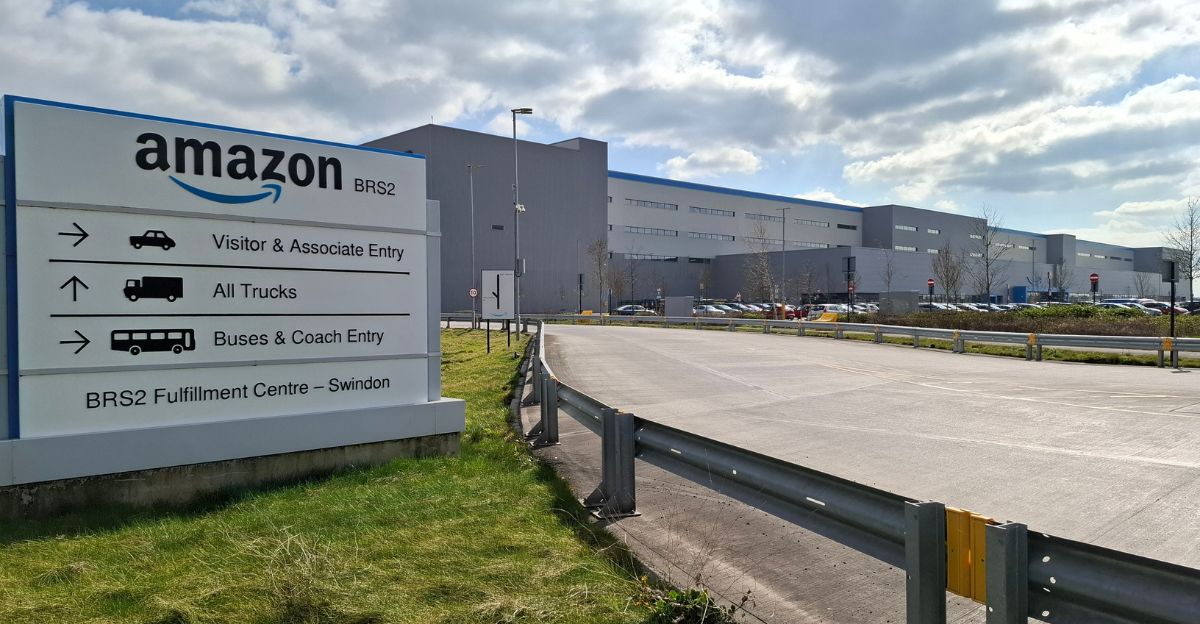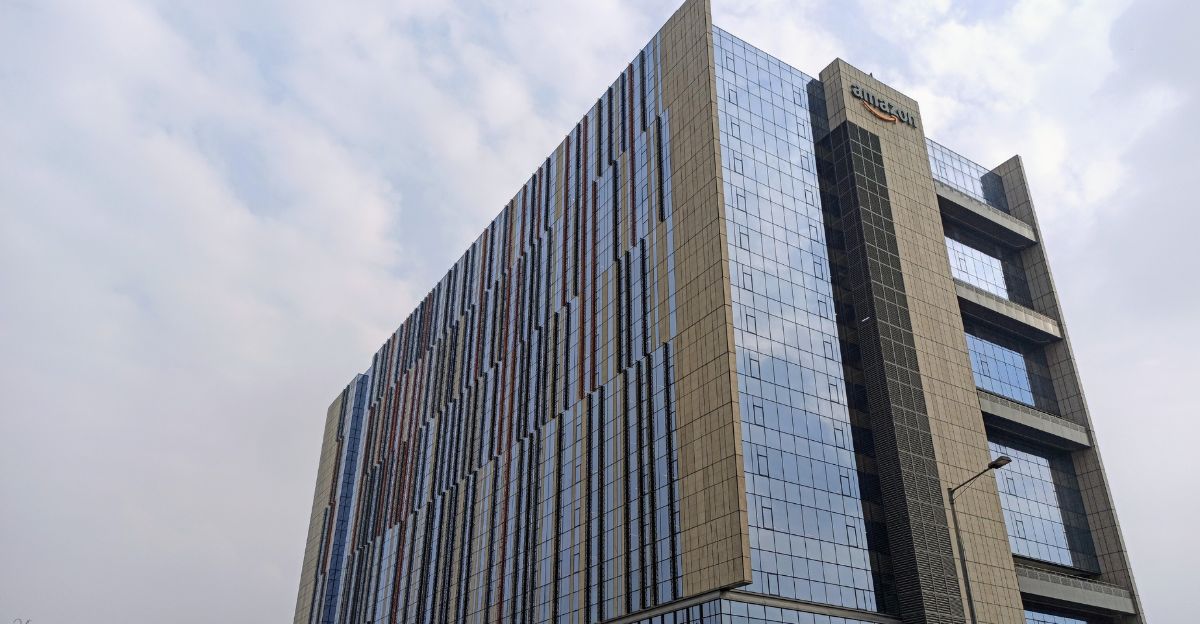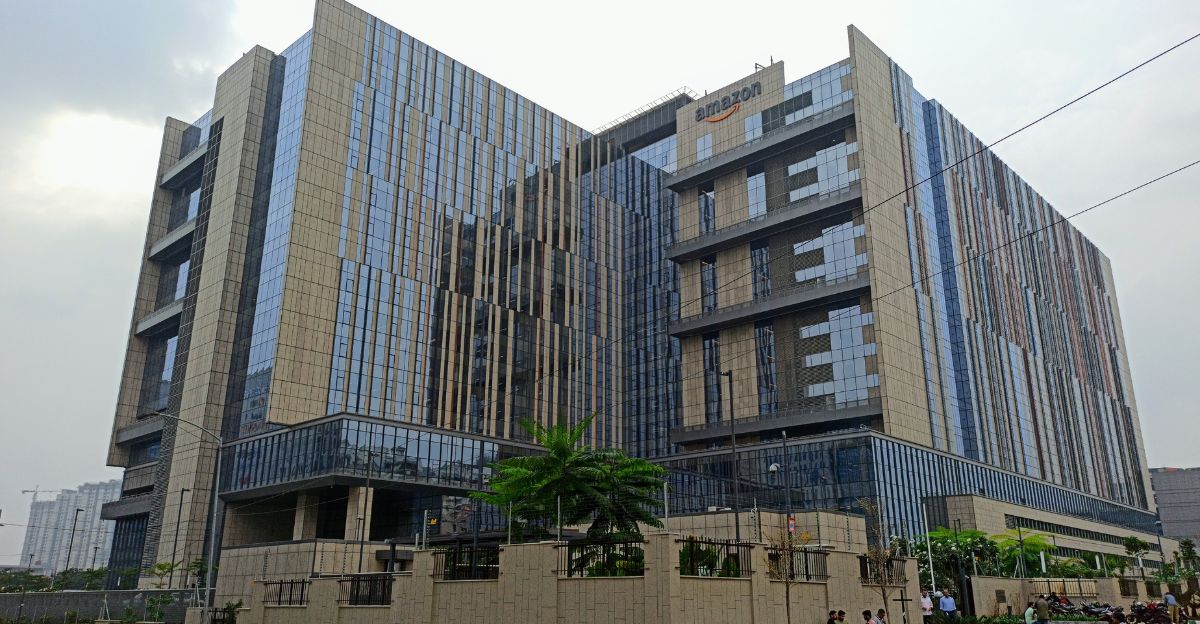
Amazon’s latest move has sent shockwaves through its workforce as thousands of employees are now facing a very tough decision: either relocate to central headquarters in Seattle, Arlington, and Washington, D.C. or resign, often without severance.
This directive marks a sharp departure from the flexibility employees grew used to during the pandemic, disrupting lives and careers almost overnight. These workers have been given 30 days to make a major life-changing decision. After making their choice, they have 60 days to follow through with it. For many people, this isn’t simply a change of workplace; it’s about relocating their families, leaving behind familiar communities, and facing an unpredictable future.
The Human Cost Behind the Numbers

Behind each relocation order is a family that is juggling school schedules, mortgages, and dreams. For a lot of these workers, this mandate means far more than just a change in commute; it disrupts children’s education, partners’ jobs, and the support systems they’ve worked hard to build in their communities.
With the deadline approaching, the emotional toll on these employees is massive. Anxiety and stress are growing as Amazon’s push for better efficiency comes at a significant cost for thousands of people.
The Disappearing Dream of Remote Work

A few years ago, remote work was considered the future as it offered employees more flexibility and a better work-life balance. But now, Amazon’s reversal signals a broader corporate retreat from these freedoms.
The message is very clear: being physically present is now valued more than autonomy and trust. For the people who flourish in remote roles, the change feels like a major step backward, challenging the progress made during the pandemic.
AI’s Shadow Looms Large

Right now, artificial intelligence is changing the workplace, and Amazon’s mandate seems like a clear sign of this. Since AI is able to streamline operations, fewer human workers are needed.
Many have argued that the relocation ultimatum is a way for Amazon to shrink its headcount without having to deal with costly layoffs, though this has not been confirmed. The employees who can’t or won’t relocate are quietly being filtered out, possibly making way for a leaner, more automated future, one where technology takes center stage.
The Psychological Toll

The threat of forced relocation isn’t just a logistical challenge; it’s deeply psychological. Many employees are now left lying awake at night, torn between staying loyal to the company and protecting their family’s well-being.
Being pressured to make a tough decision so quickly, with little support, can erode mental health and job satisfaction. For many of these workers, the stress doesn’t end once they’ve made their decision; it lingers, affecting their performance at work and personal relationships long after the dust settles.
Lessons from Corporate History

The company’s strategy isn’t anything new. A few decades ago, giants like IBM and General Motors used comparable strategies to reduce their workforce under the guise of “efficiency quietly.”
Based on past events, these moves often backfire, pushing away top talent and eroding the company’s reputation. Though Amazon frames it as promoting “collaboration” and “innovation,” it’s an old strategy that comes with a significant human cost.
The Myth of Team Unity

Amazon has said that bringing employees together will help the company boost productivity and foster innovation. But the big question is: does forced proximity really create unity? Many experts say that true collaboration is built on trust and autonomy instead of physical presence.
Forcing all of these employees into the same space can create frustration, hurt morale, and weaken the company’s efforts to build a sense of teamwork.
Innovation in the Halls—At What Price?

While it’s true that spontaneous hallway chats can spark new ideas, innovation struggles to grow in an environment filled with fear and uncertainty.
If managed with empathy and flexibility, Amazon’s workspaces could become centers of creativity. Without that, the company risks losing the expertise and passion that fuel innovation, as the people who are unwilling to relocate walk away.
Ripple Effects on Local Communities

The impact of Amazon’s decision extends far past its workforce. Soon, cities like Seattle, Arlington, and Washington, D.C. could see a sudden surge in demand for housing, schools, and services.
At the same time, communities losing these employees, like Boston, for example, could face sudden economic downturns as professionals and their families leave.
The Real Estate Domino Effect

If thousands of employees all relocate at the same time, it could send shockwaves through local real estate markets. Home prices might soar in Amazon’s chosen locations while other cities might see declines.
Renters and buyers might also feel the squeeze, and infrastructure might be strained as neighborhoods struggle to absorb the influx.
The Ethics of Efficiency

Amazon’s push for greater efficiency raises serious ethical concerns. Is it right to ask employees to make such personal sacrifices for the sake of profit and productivity?
As AI and automation change the workplace, companies need to figure out how to balance technological progress while still treating their human employees with care and respect. How they choose to strike that balance will shape the future of work for millions of people.
A New Model for Workforce Management

The “relocate or resign” policy acts as a powerful filter, pushing out people who are unwilling or unable to adapt. It shows that the company values physical presence over flexibility.
Other corporations are monitoring the situation closely as they consider whether to adopt similar models to navigate the post-pandemic landscape.
The Future of Collaboration

Amazon’s decision has prompted a deeper look at what collaboration really means. Can creativity and teamwork really thrive in an environment of fear and compulsion?
Or does true progress require a more nuanced approach, blending in-person interaction with the freedoms of remote work? The answer to these questions will shape not just Amazon but the broader corporate world.
The Employee’s Dilemma

For many Amazon employees, this is a tough choice; they can either move and start over or walk away from their careers. Some will take the opportunity to start over, while others will mourn the loss of the stability and community they once had.
Each person’s decision is deeply personal and is shaped by family, finances, and future hopes. The company’s mandate is a test of loyalty, resilience, and adaptability.
What Lies Ahead

Amazon’s relocation mandate is more than just some company policy; it points to the future of work. As AI advances and businesses seek greater efficiency, workers across many industries could face similar tough choices.
The real challenge is finding ways to embrace technology’s benefits without sacrificing the well-being of the people who make innovation possible. This story is still developing, and for now, it’s hard to tell what the future holds.
Discover more trending stories and Follow us to keep inspiration flowing to your feed!

Craving more home and lifestyle inspiration? Hit Follow to keep the creativity flowing, and let us know your thoughts in the comments below!
